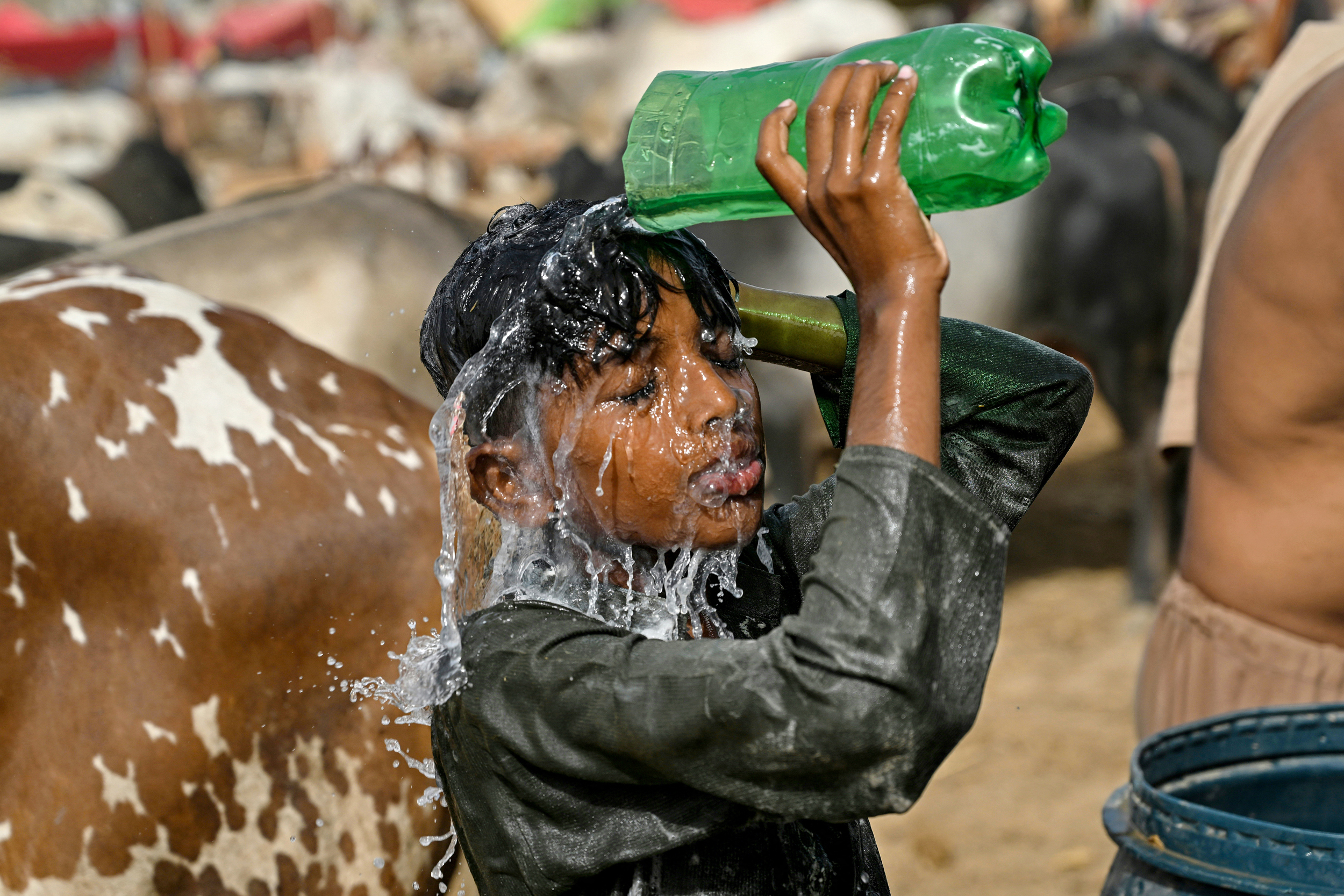
A child pours water over himself to cool off during a heat wave at a cattle market in Karachi on May 31. Credit: Rizwan Tabassum/AFP via Getty Images
Inside a sprawling estate in Karachi’s elite Defense neighborhood, air conditioning hummed in a low-frequency buzz. Sherry Rehman, Pakistan’s former federal minister for climate change, walked into a chilled study room and clutched her shawl tighter around her. “Turn this down,” she told an aide. “It’s freezing in here.”
A Karachiite born and bred and a career politician, Rehman, 64, previously served as the country’s top climate change official. She witnessed the city weather its many crises. In recent years, she said, recurring heat waves have reshaped even local politics, pushing open-air rallies and political gatherings indoors, further distancing citizens from their leaders.
“I got heat stroke several times because I was out for long periods of time for political campaigning in the interior of Sindh province, not realizing it’s over 50 degrees,” Rehman said, as she settled behind the wooden desk, surrounded by books, unfurled flags and the low hum from the wall-mounted air conditioners.
Outside, Karachi sizzled under a late-season heat, with warmer temperatures pushing well into December—a new and anomalous normal. A concoction of dust and exhaust thickened the air.
In the same city, about 10 miles east, the late afternoon sun poured heat over Perfume Chowk—a bustling roadside market known for a popular scent stall and street vendors. Amid tangled wires, snarled traffic and faded signs, Perfume Chowk seemed like a perfect example of urban entropy.
Within its one-mile stretch, religious sects competed for attention—banners hung from shopfronts, posters and chalked slogans bore religious and political messages and loudspeakers blasted overlapping sermons. The result was a cacophony of devotion and division, giving the whole strip the complexion of a sectarian powder keg.
Amid this tense sensory theater, Ali Zaidi sat at a rickety wooden stall selling small glass bottles of fragrance to passersby whose shirts seemed to cling to their skin. Zaidi, a Ph.D. candidate in anthropology at Stanford and a tutor at a local university, was here conducting immersive fieldwork into what he calls the “social life of heat.”
“Heat shouldn’t just be viewed as a weather phenomenon, but as a socio-political condition,” Zaidi said. “If you map the city thermally, the pattern is clear: Poorer neighborhoods are consistently hotter. The wealthier areas are cooler because of tree cover, openness and lower density.”
Separated by profession and location, both Zaidi and Rehman were trying to make sense of the same threat of smothering heat—one through physical immersion, the other from the vantage point of policy. Their paths hadn’t crossed, but the crisis connected them in ways neither could ignore.
It’s not the drastic events, it’s the silent things, the way things are changing on an everyday basis.